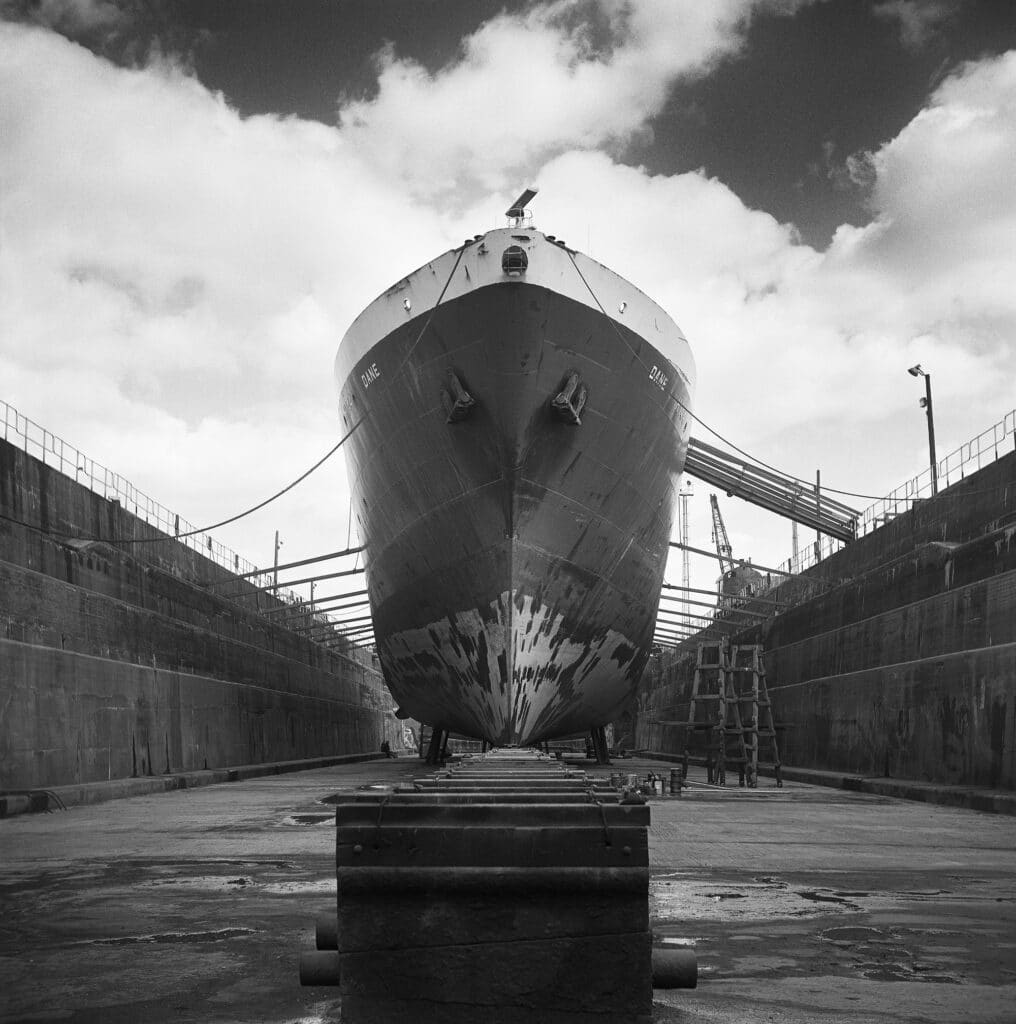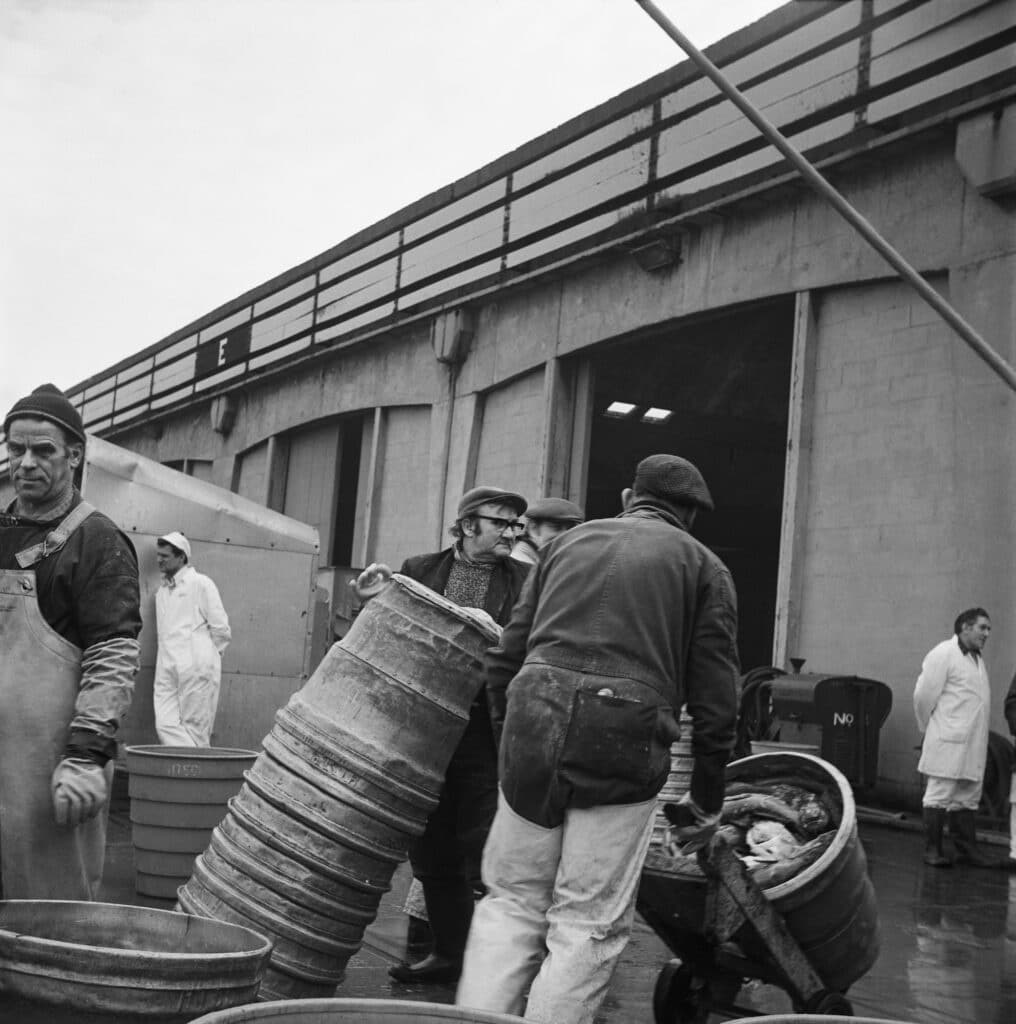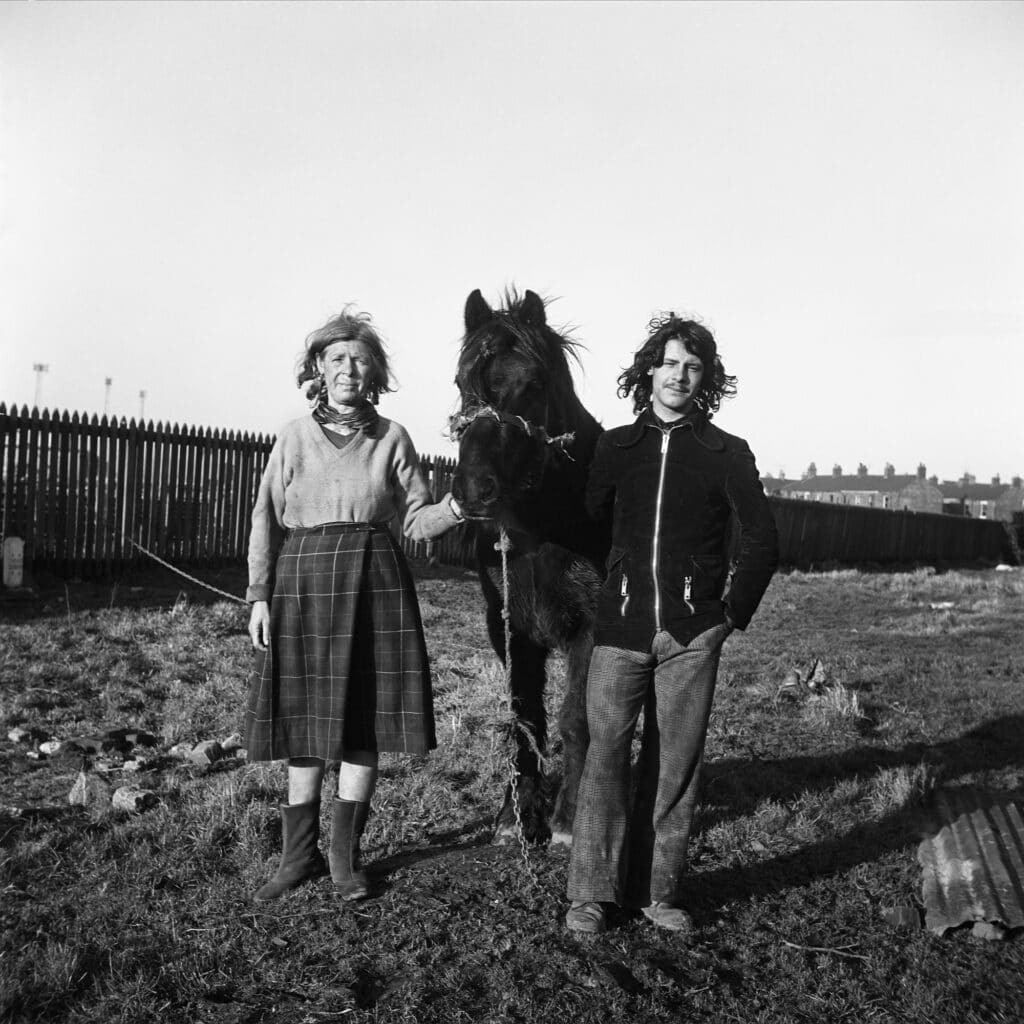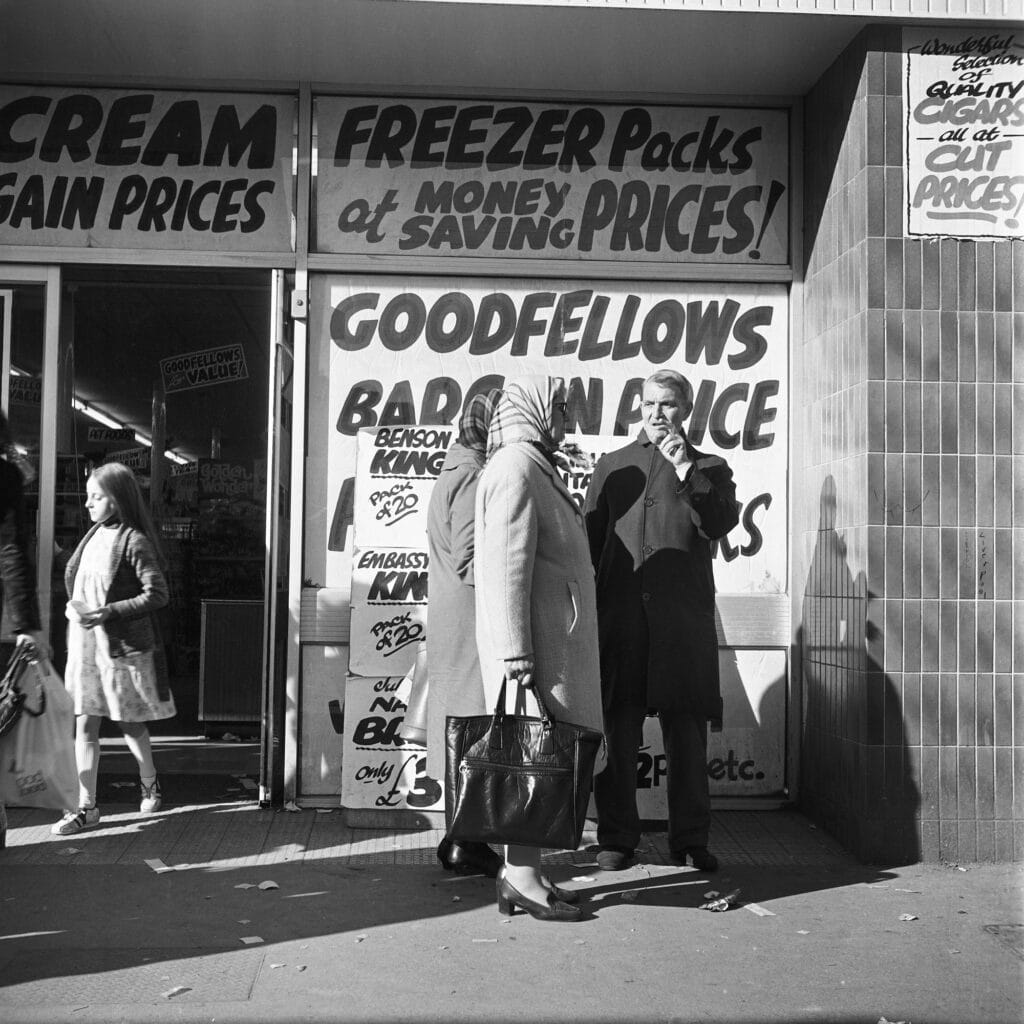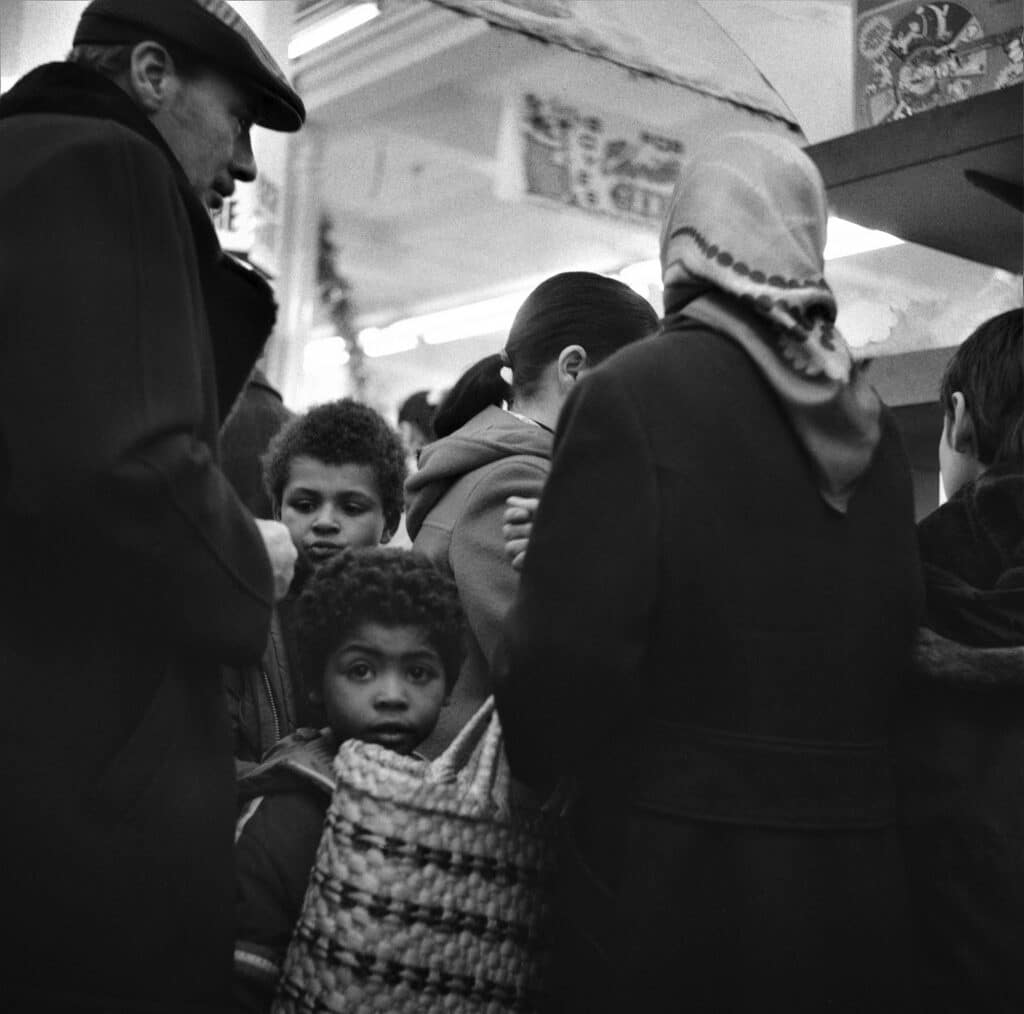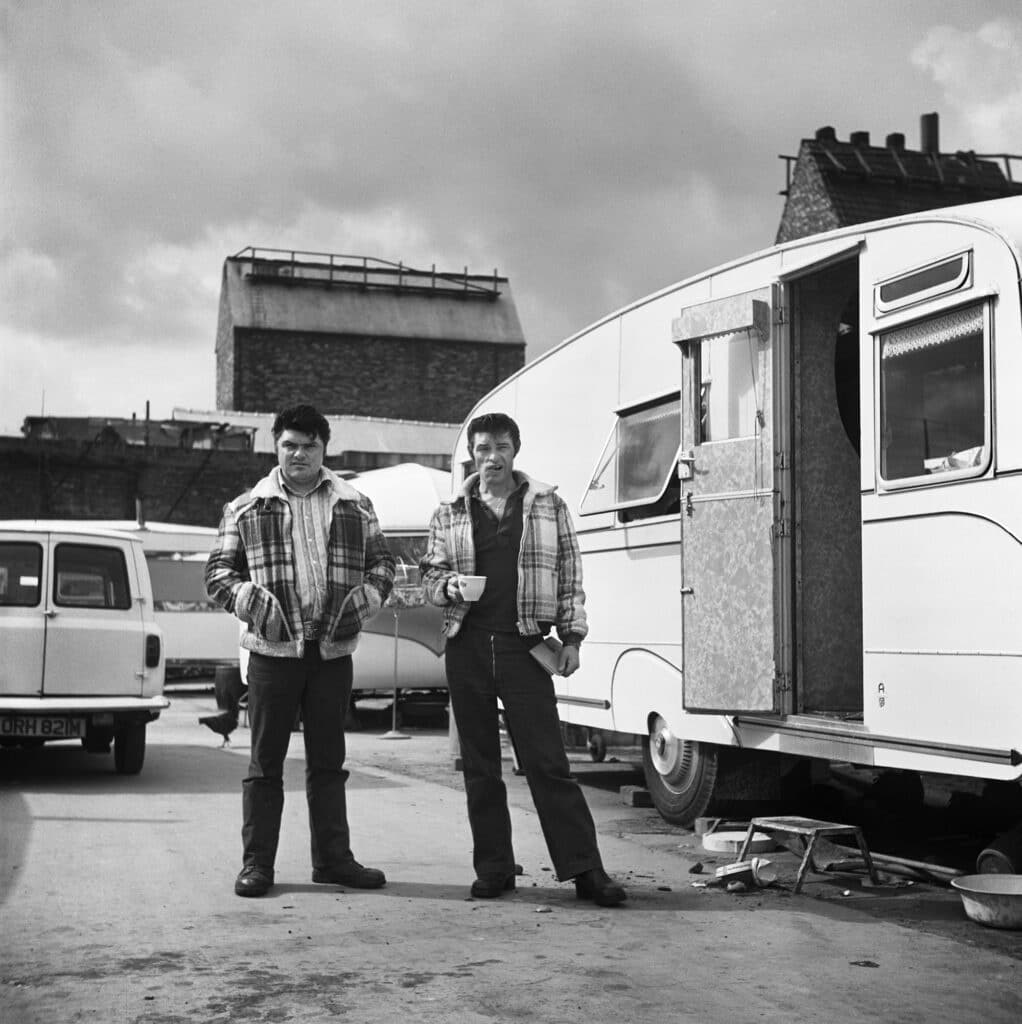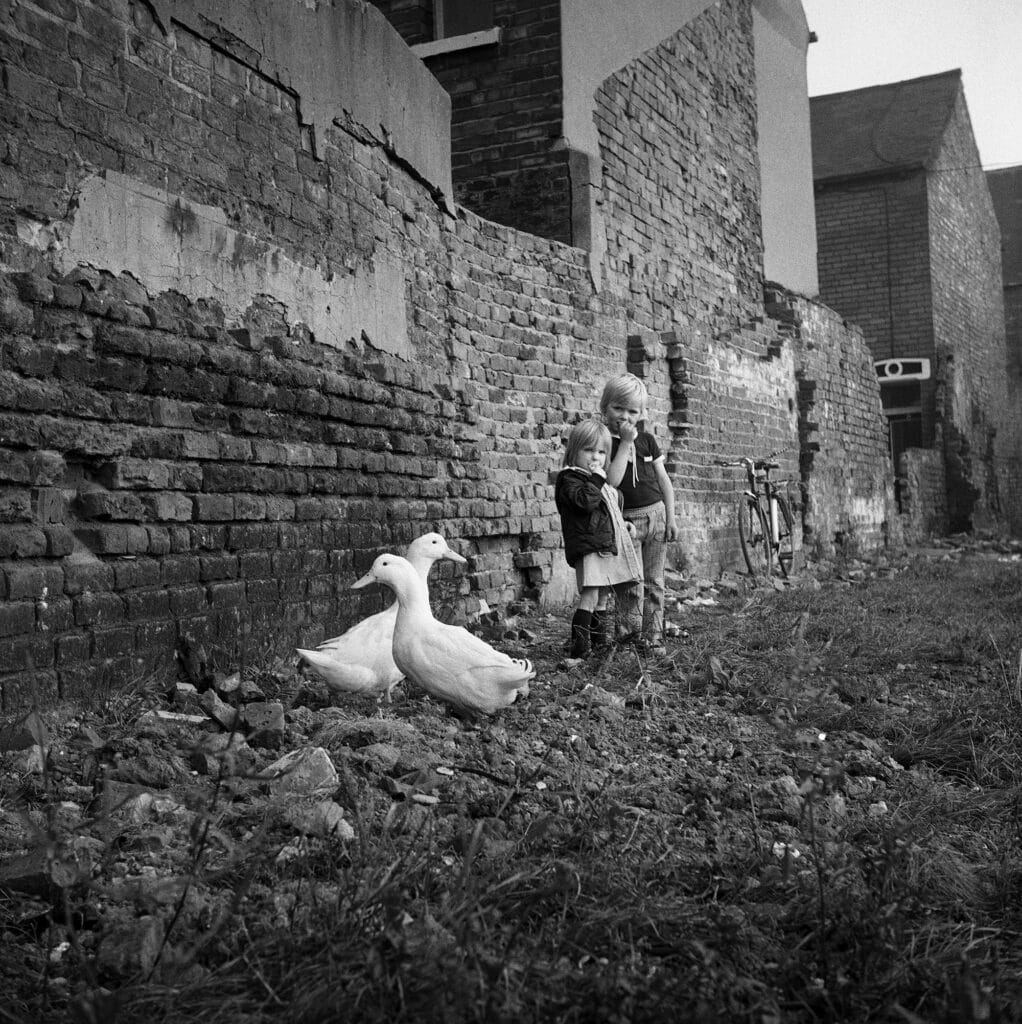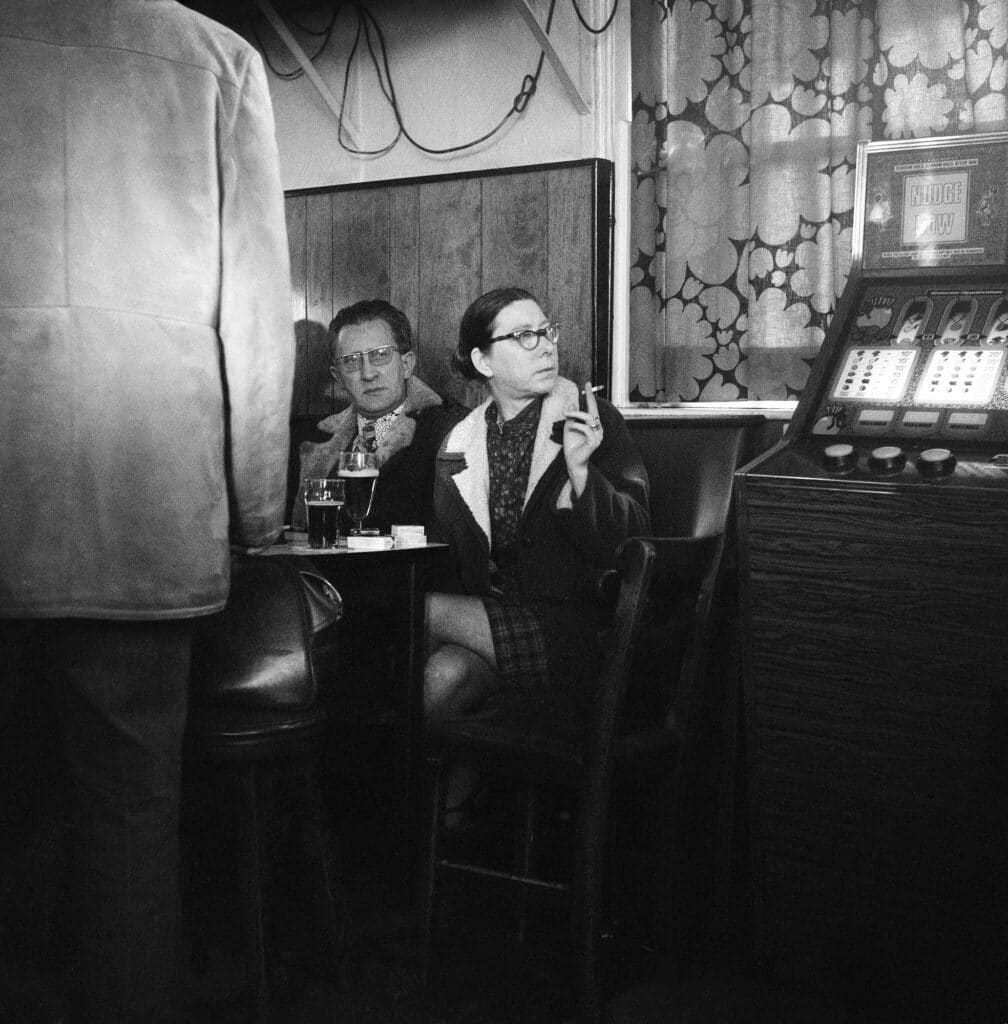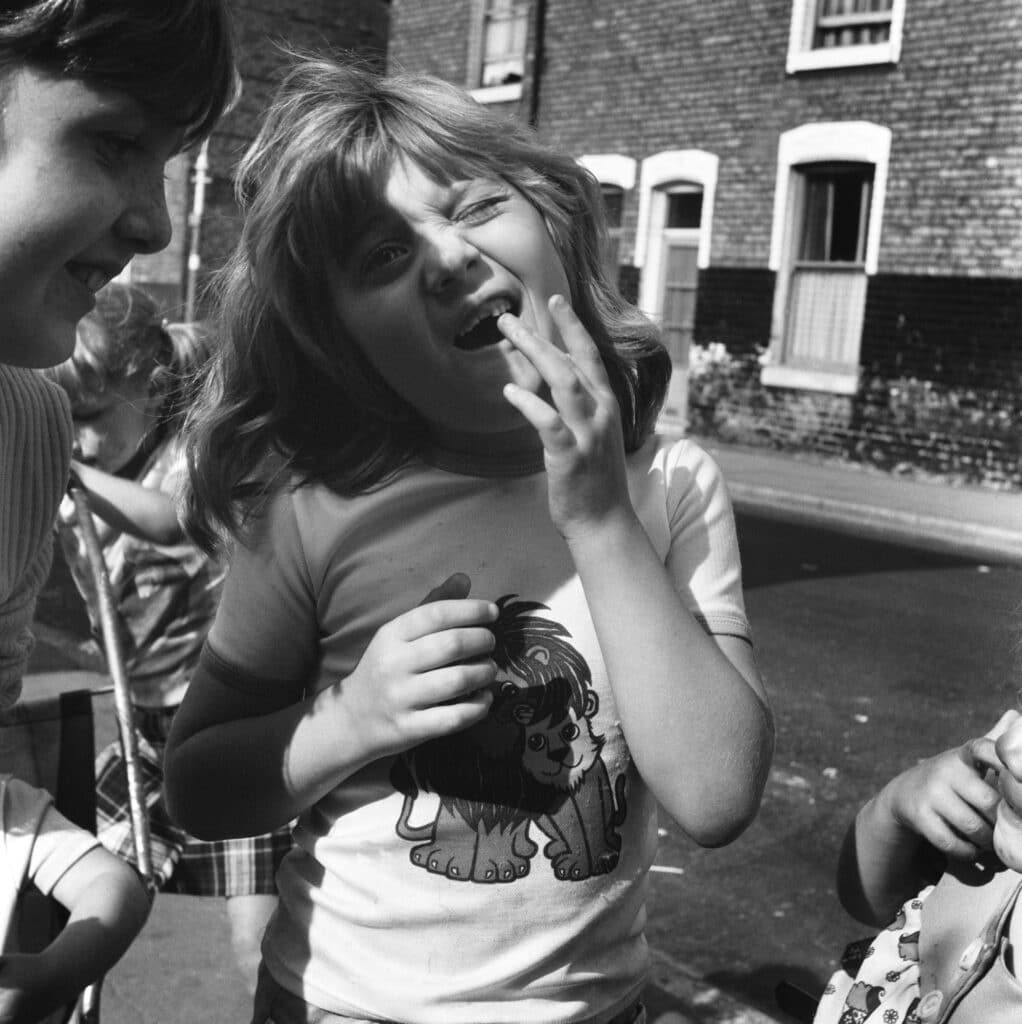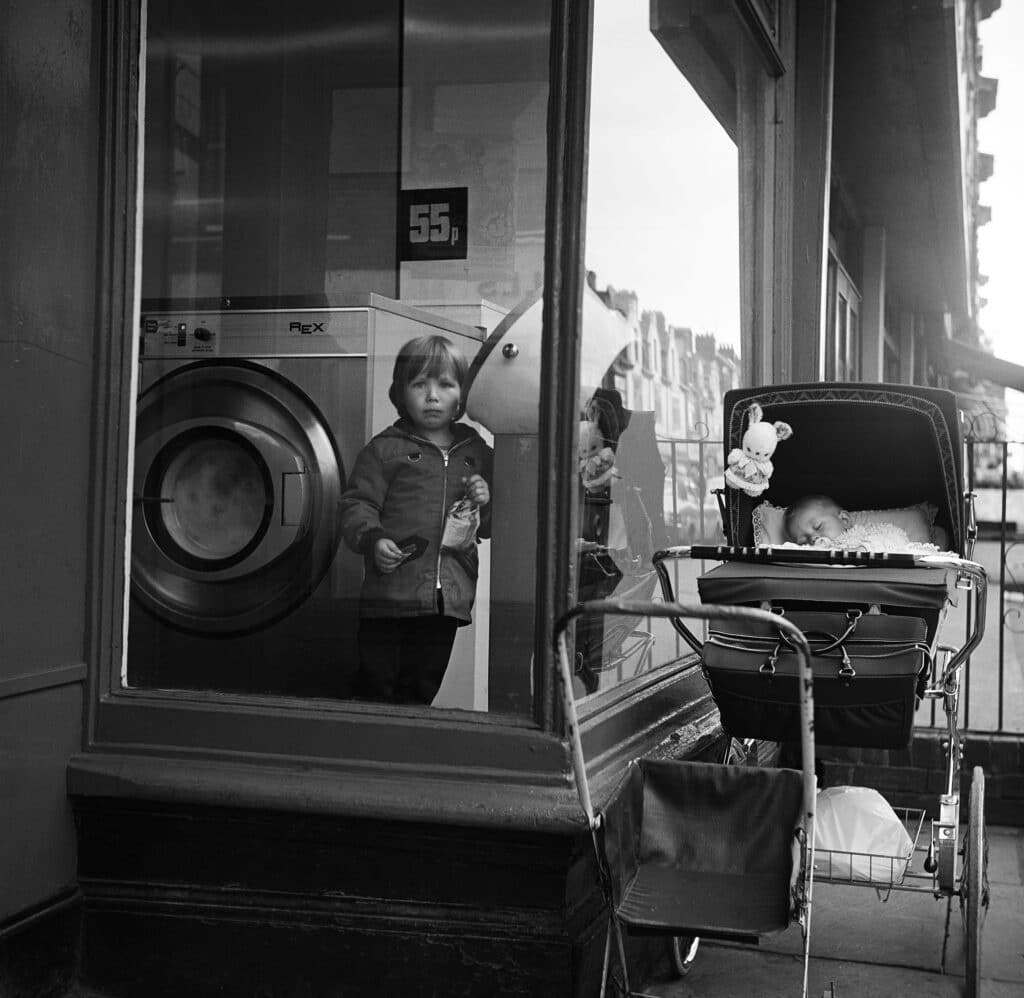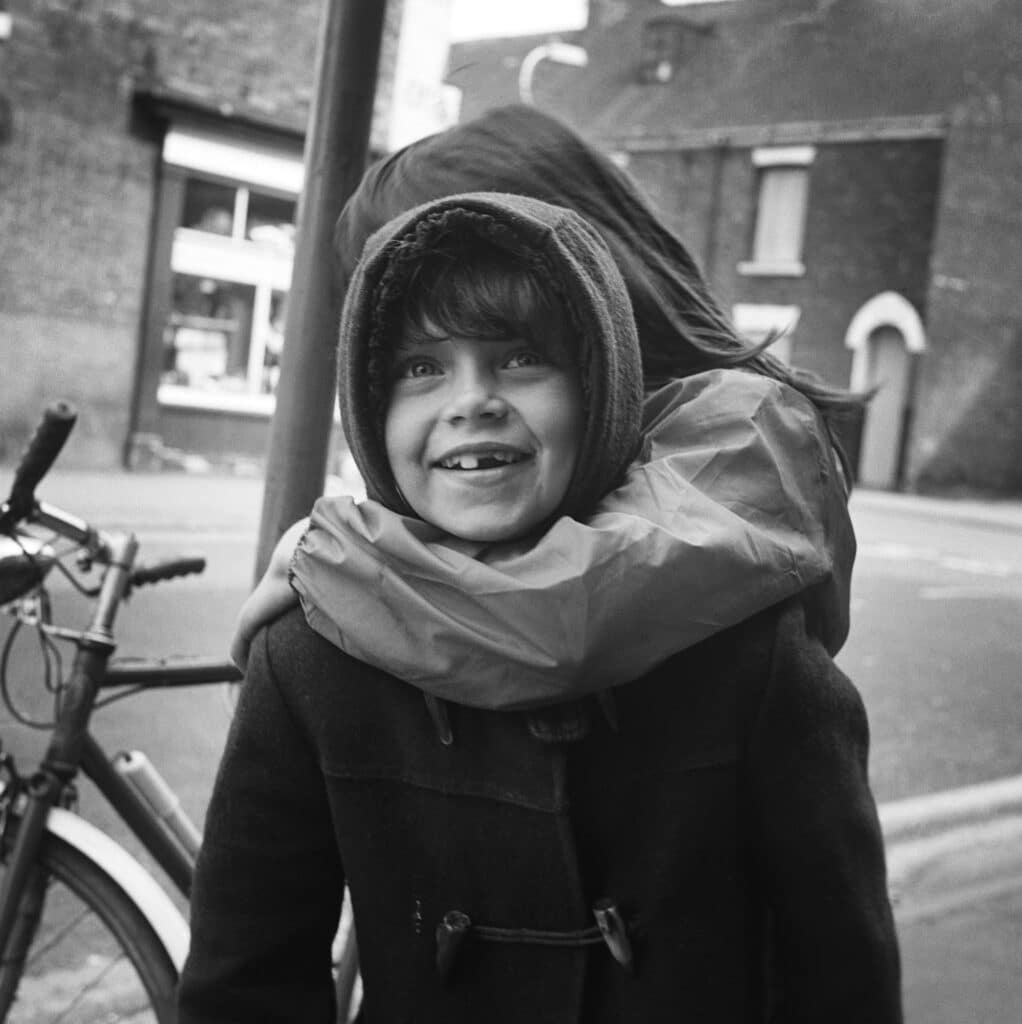In the early 1200s, Hull was the sixth largest port on England’s eastern and southern coasts; by the 1400s, local seafarers and boat owners were engaged in the fisheries of Iceland. Maritime trade continued to grow steadily and, over the course of the 19th century, Hull became one of the most important port cities in the UK, providing a living for more than a quarter of the city’s population.
Between 1971 and 1987, using a Rolleicord twin-lens reflex camera, photographer Alec Gill documented one road and its community in the port city of Kingston upon Hull. Located in the northeast of England, Hull, as it is commonly known, sits at the heart of the UK’s historic fishing culture.
Also a local historian and an author, Alec Gill wasn’t working as a commercial photographer or approaching his photographic practice as a form of artistic expression. He was a budding academic who was deeply interested in people and would go on to study a degree in psychology. His travels abroad in between jobs had led him to realize that there was a fascinating and rich fishing culture on his doorstep. Taking photographs of his native Hull consequently became a way of connecting with and understanding people on a human level. “I wasn’t keen on the idea of taking pictures and then sneaking away, never to give anything back in return,” writes the photographer in The Alec Gill Hessle Road Photo Archive Book, dedicated to his work.
Up until the 1970s, Hull’s port and Hessle Road area was a bustling and unique part of the city. With the isolation of their homes at one end of the town, and with the very special conditions under which those connected with the trade worked, for a whole century the fishing community was almost completely severed socially and geographically from the rest of Hull. This disconnection gave the place its very own character and culture.
Hull: Port City, Sea People
The very first photograph Alec Gill took of the fishing neighborhood was of some trawlers one year before the second Cod War (1972). He didn’t give it much thought at the time and he certainly wasn’t planning to make it a long-term project. It wasn’t until he’d gradually built up his practice that he realized the importance of the social experience he’d been documenting. It became a period of devastating political, social and economic change due to the third (and final) Cod War in 1975, compounded by the announcement in April 1977 that most of the Hessle Road neighborhood housing was to be demolished and the residents relocated. A community was being torn apart and would disappear as it once was forever. “I was determined to continue to capture as much as he could before it was too late,” tells the photographer.
Alec Gill’s photographs tap into the ever-hopeful attitude of Hessle Roaders, despite the chaotic situation they found themselves in. Enthusiasm for life wasn’t a choice for them – it was a necessity given that they were continually faced with the loss of loved ones at sea and a shared uncertainty about how long was left to live for seafaring family members and friends. Life for trawlermen was treacherous and this resulted in collective trauma for the whole community.
Socializing on the street was an integral part of reconciling themselves with life and it created a great sense of neighborhood camaraderie. A benign and curious observer, Alec Gill used his camera as a tool to record and examine fragmentary moments of day-to-day life and offer a glimpse into the realities, everyday landscapes, human experiences and interactions of a neighborhood on the street, while also revealing a period of societal change. His humanist approach to taking photographs and the spontaneity of his images, often capturing frozen action, give his work a warm and inviting feel. It is easy to imagine you are in some of his images, watching from the sidelines. Scenes of people shopping, chatting, drinking, celebrating, playing, eating, sitting, queuing, walking or running, all paint a picture of the community dynamics of Hessle Road. “Within the streets, there were small terraces,” tells Alec Gill. “Whenever I cycled around there, rather than along the busy Hessle Road, I would be seeing things.”
Alec Gill has exhibited his photographs several times over the years, but the short lifespan of a show – as opposed to the longevity of a book – is part of the reason for his book project. “The way we engage with and experience an exhibition is also different and this publication allows for a reframing of the work in the context of the printed page,” writes Iranzu Baker, the author of Gill’s book. “We also invite readers to be active in creating meaning, given that there is never a correct way to read or interpret a photograph. We hope to preserve the work of an important voice in photographic discourse and continue to remind younger generations of this part of history, making it intrinsic to our long-term memory, and more widely recognised beyond the city of Hull. Between 2019 and 2020, as we revisited the archive in preparation for this book, the body of work took on a new meaning. Against the backdrop of the COVID-19 pandemic and the dramatic changes that the whole world was experiencing, we noticed that the way we were responding to the photographs had shifted. The notion of community spirit Alec tried to capture in his work suddenly felt more visible and poignant than ever. It seemed to further emphasize the contemporary relevance of archives. As the world changes, so too does the way we interpret historical records, including photography, and this allows us to start new conversations.”
Alec Gill’s book is by no means a historical or academic guidebook. The photographer and the author have selected over 240 images from Gill’s archive of almost 7,000 black and white negatives. Short texts, annotations, quotes and typographic marginalia are threaded throughout in reference to his documenting process and to add a layer of anecdotal information to the reading experience. It does not intend to be a political comment on the landscape of the declining fishing industry. Instead, it is a photographic record full of texture which gets to the very core of who we are as human beings and becomes a space to celebrate and honor Alec Gill’s ongoing engagement with Hull’s fishing community which has lasted over 50 years.
Alec Gill is a storyteller. In his work, we are presented with the light and shade of a part of British history that is not often spoken about outside of Hull – a unique portrayal of resilience, unity and human connection. “Meandering through the streets of Hessle Road is the main body of the book and has been intuitively formulated in reference to Alec’s approach to the physical act of taking photographs,” writes Iranzu Baker. “His working practice was free: he would wander the neighborhood with no fixed plan other than to stop if he saw something intriguing enough to capture.”
Iranzu Baker
The Alec Gill Hessle Road photo archive book can be purchased here for £50.

